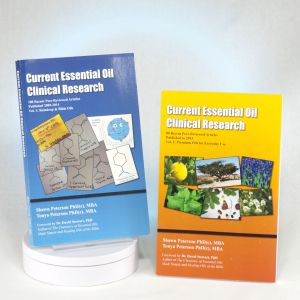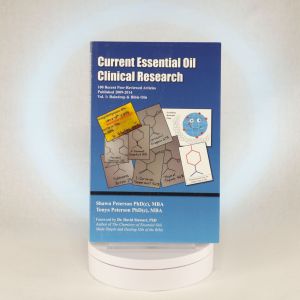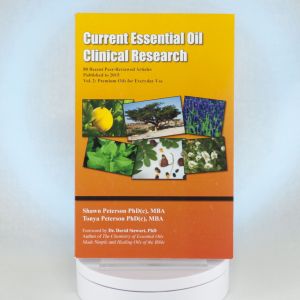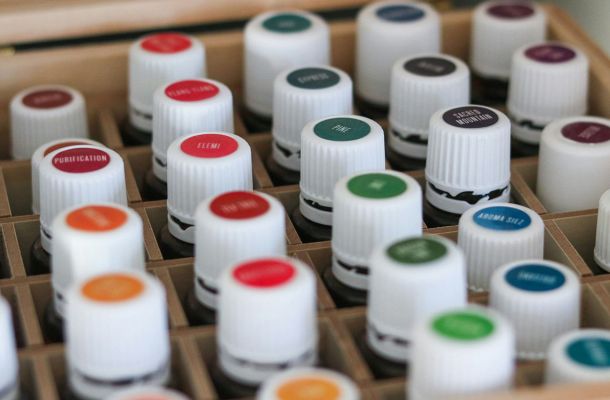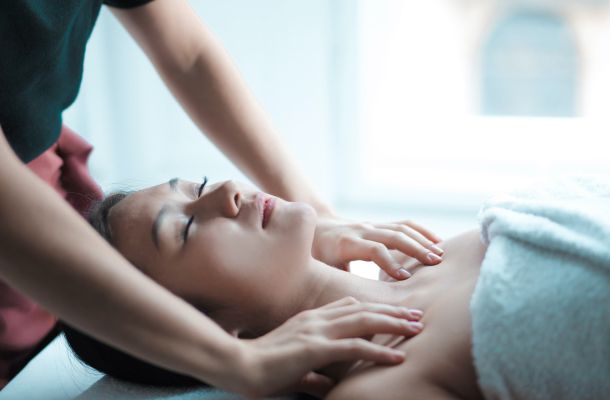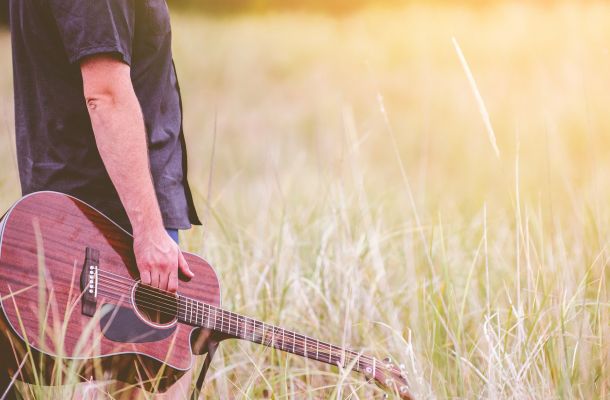This website uses cookies so that we can provide you with the best user experience possible. Cookie information is stored in your browser and performs functions such as recognising you when you return to our website and helping our team to understand which sections of the website you find most interesting and useful.
Our Volcanic Diamond Trip to Hawaii – Volume 14 Number 3
Please feel free to share this newsletter!
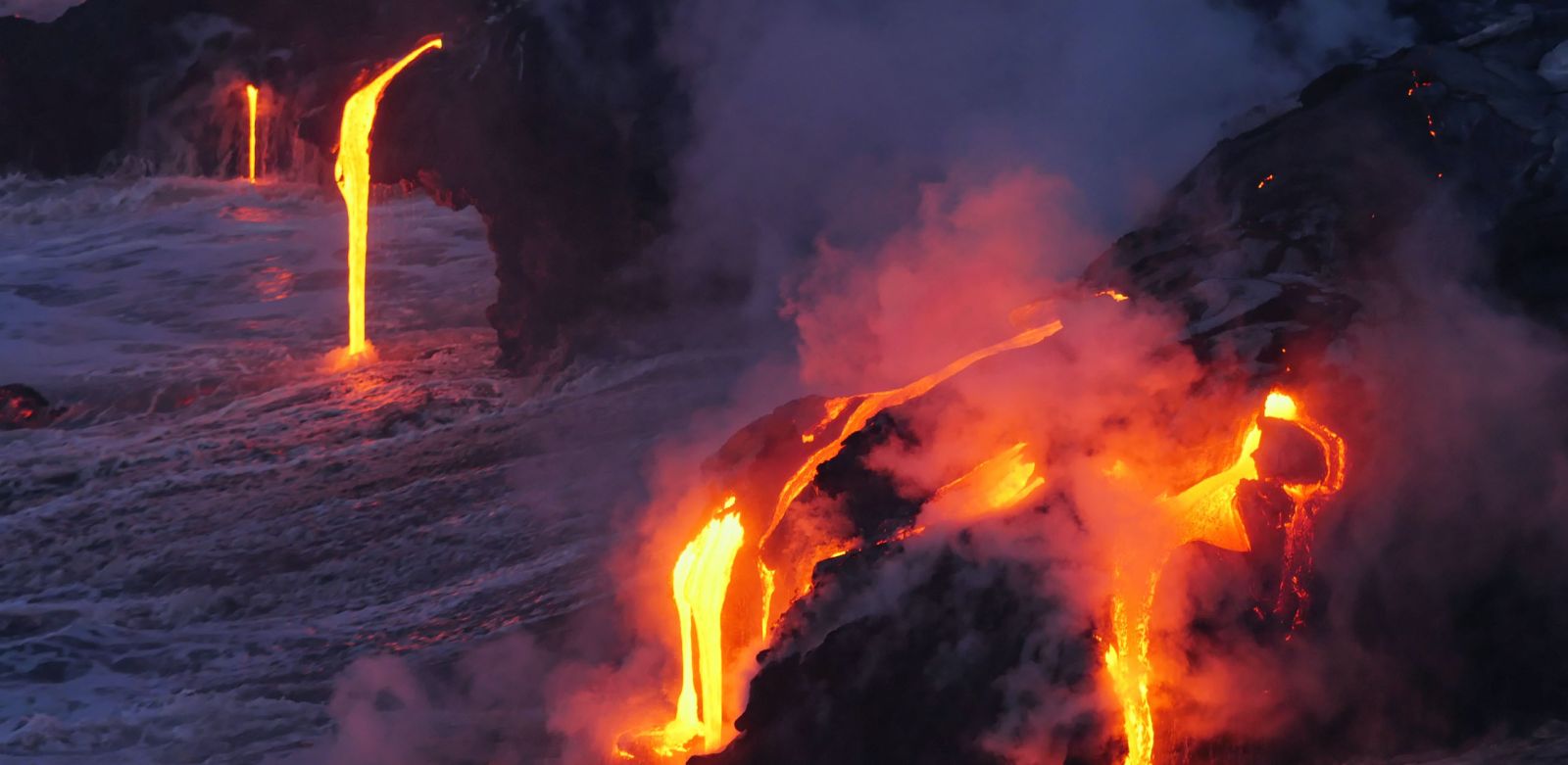

Raindrop Messenger
Official Newsletter of CARE
The Center for Aromatherapy Research and Education
12923 BCR 800, Marble Hill, Missouri USA 63764
(573) 238-4846
NOTE: The information in this newsletter is intended for education purposes only. It is not provided in order to diagnose, prescribe, or treat any disease, illness, or injured condition of the body or mind. Anyone suffering from any disease, illness, or injury should consult with a physician or other appropriate licensed health care professional.
Our Volcanic Diamond Trip to Hawaii
Originally Posted Summer 2016
1. Our Volcanic Diamond Trip to Hawaii
~^~by David Stewart, PhD
Each year Young Living pays for an exotic trip to some exciting destination for all of the Diamonds, Crown Diamonds, and Royal Crown Diamonds. This year, during the week of May 8-16, 2016, we went to the “Big Island” of Hawaii where Young Living is establishing a Sandalwood Plantation and Distillery. Lee and I have visited Young Living Farms at Mona, Utah; Ste. Maries, Idaho; the Black Spruce Plantation at Highland Flats in northern Idaho; and the Herb Farm in Ecuador, but this was our first trip to the Sandalwood Plantation in Hawaii.
Sandalwood is a tree whose wood, roots, and berries yield a wonderful essential oil. For years, Young Living obtained its Sandalwood from India and other locations in the Far East. But the supply has been dwindling from those sources, and some countries, like India, have recently banned the exportation of Sandalwood outside of their country. Sandalwood Oil is a spiritual oil good to diffuse during prayer or meditation, but it is also a powerful healing oil, that is effective for healilng cancer, among other things.
SANDALWOOD AS A HEALING OIL FOR CANCER
When my wife, Lee, was diagnosed with Stage IV (terminal) cancer in 2014, Sandalwood oil was an important part of her therapy. Upon diagnosis, we immediately went to Gary Young’s Farm and Clinic, in Ecuador, where Sandalwood was administered topically, directly to the skin, and also taken intravenously on an every day basis, along with other oils. She had been given “four or five months to live,” by medical authorities. Their negative prognosis was to occur even if she accepted their recommendations of surgery, chemo, and radiation. Therefore, Lee refused all of their recommendations and never went back to see the doctor again. He still doesn’t know that because she ignored his advice, she is now cured and well.
Instead of the recommended medical regimen they recommended with little hope of success, Lee chose essential oils and was in remission within the “four or five month” time they thought she had to live, and is still cancer-free more than two years later. So visiting a source of her healing Oil of Sandalwood in Hawaii was special for us. (Visit the Archives of “The Raindrop Messenger,” accessible from the home page of www.RaindropTraining.com, for the complete account. The article is in the Summer, 2014, issue, Vol 12, No 2)
WHAT IS A SANDALWOOD PLANTATION LIKE?
Sandalwood (Santalum album) is indigenous to India and Thailand, but also to the Hawaiian Island. Since these countries no longer allow the export of their Sandalwood, several years ago Gary Young decided to purchase land, and establish Young Living’s own source, from a plantation on the “Big Island” of Hawaii. Sandalwood oil has been a major cash crop for Hawaii for more than 200 years, but it was being harvested in a destructive way such that the number of Sandalwood trees there have been diminishing at an alarming rate that cannot be sustained. Young Living is not only preserving the species for the future, but is expanding and increasing the number of trees to fulfill Young Living’s growth indefinitely into the future. Young Living’s Sandalwood Plantation in Hawaii is at a relatively high elevation (more than 6,000 feet above sea level) on a volcanic mountainside that flanks Mauna Loa, Hawaii’s largest volcano. It is accessible only by a long steep narrow, mostly unpaved, road straight up the mountain. It’s only other means of access is on foot, or by helicopter.
When the Diamonds visited the plantation in May, about one-fourth of our number rode up in buses, but the other three-quarters of the group flew up in a fleet of helicoptors, with about 8 passengers per flight. It was the largest helicopter transport in the history of Hawaii.
It was my first visit to a sandalwood plantation. I expected to see neat rows of stately Sandalwood Trees, like the orderly groves of Ylang Ylang trees in Ecuador or the tall Spruce Trees at Highland Flats. But when we got there, there were no discernable rows of trees of any kind, but rather there were rocky areas of uneven rock-strewn land with short scrubby trees and shrubs amidst thick wild grass. It was difficult to walk over the terrain because of the irregular land surface of large rocks and holes obscured with thick dry grass where one could step into an unseen depression, trip and fall. The Sandalwood “trees” were short and scrubby looking, most less than five feet tall, and many looking dead with few or no leaves. They were not arranged in well defined rows, but were scattered irregularly over the rocky landscape. Some had berries that bore oil, but most did not. There is oil in the tree, the berries, and in the roots. In the past, the Sandalwood trees of Hawaii were harvested destructively and not replanted. But Young Living wants to harvest them in ways that preserve their growth for all future generations.
Besides the large building housing the distillery, there were two large hot tubs, out-of-doors nearby, containing fragrant distillation waters from the Sandalwood. Many Diamonds had come prepared with swimming suits to soak in the warm fragrant envigorating sandalwood infused waters. It was late afternoon when we prepared to leave, since it usually rains on the mountain almost every afternoon. It began sprinkling as we departed from the summit, but by the time we reached the base of the mountain, a real tropical downpour suddenly drenched the landscape, including those of us who had not yet made it into the shelter of the buses.
A WEEK ON A DIAMOND RETREAT
Besides our trip to the Young Living Sandalwood Plantation (which was only one day) we spent a wonderful week at a beautiful sea-side resort a few miles south of the Hawaii Airport on the western side of the island. The resort, itself, was huge–over 30 acres they said. We each had our own private villa. There we dined next to the waters of the Pacific lapping across the clean beach sands with a lavish breakfast, exotic lunch, and a pleasant supper with live Hawaiian music performed to the background sound of washing waves, usually during a gorgeous sunset across the western sky.
The food was delicious and special. There were also some programs, including one evening with an outside buffet on a hillside with native drummers and dancers on stage. You will have to go Diamond to fully appreciate the adventures that YL Diamonds are honored and privileged to enjoy. Next year, in 2017, we will all be going for a week to Australia. Work your YL Business effectively now, and in the months to come, and you may be able to join us there. I don’t know the dates of the Australian Trip next year, but you have to qualify as a Diamond at least three months beforehand to be eligible to participate.
HISTORY & GEOLOGY OF THE HAWAIIAN ISLANDS
All of the Hawaiian Islands originated from volcanic eruptions that began under water on the sea floor until enough lava accumulated to build a mass that projected above sea level, forming an island. The chain of islands generally referred to as “The Hawaiian Islands,” is eight in number. Beginning with the north-western most island they are: Niihau, Kauai, Oahu, Molokai, Lanai, Maui, Kahoolawe, and Hawaii (also known as “The Big Island).” Extending in a 400 mile long chain, westward from Niihau, are eleven more small islands, or coral reefs, almost all uninhabited. The largest, most westward, and most well known is Midway Island, which was an American Naval and Air base during World War II. All ninteen of these additional islands are part of the Hawaii chain, but only the eight eastern and southernmost islands, named above, are generally referred to as “The Hawaiian Islands.”
Oahu is the island where Honolulu, Diamond Head, and Waikiki Beach are located and where most tourists land. It is the third island in the principle chain counting Southeastward from Niihau. In order to protect and preserve the native polynesian culture, predating the first intrusion of Europeans in the late 1700’s, Niihau has been forbidden to visitors. Boats from elsewhere could not dock or disembark there, and even airplanes were prohibited from flying over or near the island. (That policy may have changed during the advent of the 21st Century.)
These islands have been inhabited from at least 500 A.D. when immigrants settled there from Java, Samoa, and/or Malaysia. The English Explorer, Capt. James Cook, landed there in January 1778. The native, King Kamehameha, and his descendants, ruled over the islands from 1782 to 1893. It was annexed to the United States in 1894, as a Territory, and became an American State in August 1959.
The southernmost and largest of the islands carries the name, “Hawaii,” which is where the 2016 Diamond Retreat took place. This island as a whole (called “The Big Island,”) is actually a single large volcano, named Mauna Loa, with several satellite volcanos on its flanks. Two of the volcanos on its flanks are currently active. They are Kilawea and Halemaumau. They are constantly emmitting smoke, fire, and, occassionally, an explosive stream of red-hot molton lava. We of the Diamond Club went there this last May to stand at the rim of the Kilawea Crater to see the fire and smoke a couple of hundred feet below. Kilawea erupted spectacularly several times during the 20th century, sending towering lava fountains hundreds of feet into the sky and gushing rivers of glowing fiery lava across several miles of land to splash with clouds of steam and boiling water into the sea. Occassionally homes and highways are inundated with the streaming incandescent lava and engulfed in the flood.
13,680 feet above sea level, Mauna Loa is the largest volcanic mountain in the world, as measured by the bulk of its volume in cubic feet above the ocean floor. Not far from Kileua is another active part of Mauna Loa volcano called, Halemaumau, which has also erupted several times during the last century.
Volcanos are classified in three categories: Active, Dormant, and Extinct. An active volcano is one that has erupted in the last 100 years; its source of lava is still hot and molton beneath the earth, and it can erupt at any time. A dormant volcano has not erupted in over 100 years, but still has warm or relatively hot rock deep beneath it in the earth. Dormant volcanoes are not likely to erupt again, but possibly could come to life. An extinct volcano has not erupted in over 1000 years, the body of lava deep beneath it has crystalyzed into solid rock, and it has no possibility of erupting again. The volcanic cone (or land-form at the surface) if an extinct volcano is eroding away or, in some cases, has completely disappeared.
Mauna Loa and its satellites are currently “Active.” The volcano that comprises Maui, named “Haleakala,” is considered to be Dormant, but does emit smoke from time to time. The two smaller islands near Maui, named Kahoolawe and Lanai, are also considered Dormant with only a remote chance of their being reactivated. The remaining islands of the chain that extend westward and northward–namely, Molokai, Ohau, Kauai, and Niihau–are all considered to be Extinct volcanos, with no possibility of ever erupting again.
When you travel around “The Big Island,” you see areas covered with red rock and areas covered with black rock. These represent two different types of lava flows when they are hot, molton, and moving across the landscape. The red rock deposits are generally composed of many small stones, small boulders, and gravel. They came from lava flows that, when hot and moving, looked like tumbling piles of hot, steaming rock. These kinds of flows are called “aa” lava. That is pronounced “Ah-Ah.” (Aa is a useful word to have in mind when you play Scrabble(R).) AA lava and its cooled deposits are rich in silicate minerals like Quartz, Plagiocase and Orthoclase Feldspar, and Muscovite Mica. These are the chief minerals in Granite and Ryolite rocks.
The dark or black volcanic rocks you see were from cooled-down “Pahoehoe” lava flows, (pronounced, Pah-Hoy-Hoy). Pahoehoe lava comprises the liquid, fluid types of flows you usually visualize as rivers of glowing melted rock when you think of a volcanic eruption. You can often see the viscous flow patterns in the solid rock from when they crept as lava over the land surface flowing like thick hot molassas. The composition of these rocks are different than the redish rocks. They are composed of dark minerals, like Biotite, Hornblend, Olivine, Magnetite, and Limonite (which are rich in iron). These are the principle minerals in Basaltic rocks.
Soil resulting from decomposed and disintegrating volcanic rock, originally discharged as lava, is very fertile, rich in all of the elements and minerals. However, large areas of Mauna Loa are devoid of vegetation since the volcanic deposits are still too recent to have sufficiently decomposed into soil. But where there is even sparse, intermittent soil available in that rocky terrain, some species of vegetation grow well. This is ideal for our Young Living Sandalwood Plantation producing the high quality oil available to us as YL Distributors. Sandalwood Oil has been a commodity of Hawaii for at least a century or two, and was a cash crop harvested by, and for, Hawaiian Royalty and other wealthy Hawaiians.
So there is your arm-chair field trip of our Diamond Trip to the Big Island of Hawaii, including a short geologic field trip of the rocky terrain that comprises the islands and nourishes our Sandalwood Oil Trees.
~^~^~^~^~^~^~^~^~^~^~^~^~^~^~^~^~^~^~^~^~^~^~^~^~^~^
2. OILING UP FOR FALL AND WINTER
~^~by Gail Hunter
Summer is winding down, the kids are back to school, and we grown-ups are switching to fall wardrobes. As our tans fade, we can focus on getting our complexions back in shape for the coming holiday season!
Skin care is more than just slathering on creams, lotions, and make-up. It is — more than we know — an “inside job.” Have you been eating right? Drinking plenty of pure water? If not, it will show in your face!
If you ever awaken with puffy eyelids, it’s a sure sign you are dehydrated from not consuming enough water the previous day! That’s because your body started going into “drought mode,” storing fluids in tissues as far away from your kidneys as possible.
Begin each day by drinking a tall glass of warm water, with the juice of half a FRESH lemon stirred into it. Alternately, you can use a drop of YL Lemon essential oil! Not only will this help hydrate you, but it will help your solid waste elimination system as well. Keeping “regular” every day helps to erase dark circles under your eyes.
Take a close look at your kids, too. If you see dark circles under their eyes, please pay closer attention to what they eat and how much water they are consuming. Many schools allow kids more access to water during the day, but it’s important that parents weigh in on this crucial health issue. If access to water is limited by the classroom rules, please do what you can to get that changed.
If you have teens with acne problems, encourage them to skip the soda pop — and dairy products! — in favor of water. (Need convincing about dairy? Get a copy of the book Whitewash by Joseph Keon and read thru it. It’s very well-researched, with plenty of references.) To flavor their drinking water, provide a metal water bottle, and let them add a drop of their favorite YL oil: Peppermint, Citrus Fresh, Grapefruit, Spearmint, and Lemon are good choices. (The best water bottles I’ve found are at http://www.flylady.net./ They don’t sweat, so can be carried in backpack or purse!)
And the plastic ones are so bad for the environment. See: https://thewaterproject.org/bottled-water/bottled_water_wasteful
Provide NingXia Red at least once daily — twice is better. The individual serving packets are easy to carry along to work or school.
In the meantime, provide Thieves Foaming Hand Soap. The Thieves essential oil blend in it kills harmful microbes, and it gets hands clean, while it’s mild enough for facial skin.
Place a stack of washcloths by the sink (Walmart sells 18 for under $3.) Teach your family to use a washcloth ONE TIME ONLY to dry hands — or face. A little basket for used washcloths is handy, and this change won’t add much to your laundry.
(Health tip: Get rid of your “community” hand towel, and dramatically reduce the chances of sickness spreading through your family this fall and winter by using this system!)
The Satin Facial Scrub by YL contains peppermint — so nice and cool, and the little grains do a great job of cleansing skin. Use it to remove makeup, and you’ll fall in love with it! Just a drop is plenty! I use it for occasional bouts of rosacea.
Also, I dab on a tiny bit of Thieves Waterless Hand Cleaner, which contains Peppermint. It’s clear, and teens can carry the pocket-size container with them to apply at the first sign of a “zit.” It destroys germs and speeds healing. (As with any essential oil, keep away from the eyes.)
Young Living’s Orange Blossom Facial Wash looks pricey at first glance, but remember that all you need is a drop! And read the ingredients! No harmful chemicals! It even has Wolfberry seed oil, and you’ll delight in the heavenly fragrance of Orange Blossom, Rose, Lavender, and other herbs and florals.
Compare the ingredients in Young Living’s ART products to any others on the market, and you’ll be impressed! You’ll also be impressed at what they can do for your complexion. Take some “before and after” selfies to record the healing your face will undergo.
If, like me, you prefer to keep your makeup and complexion care regimen simple, check out the Boswellia Wrinkle Cream, Sandalwood Moisture Cream, and/or the Rose Ointment. Treat yourself! You deserve it! (The Wolfberry Eye Cream is lovely, too, but is currently out of stock.)
Take some time soon to go thru your “collection” of skin care products, and toss the old and chemical-laden ones. (Please recycle the plastic containers.) Then make your choices from YL’s wonderful selection, and place an order. You’ll be glad you did! Blessings.
Gloria Miller is an Independent Young Living Distributor
3. PUBLISHED RESEARCH ON ESSENTIAL OILS YOU CAN QUOTE FOR THE FDA, FTC, & EPA
Regulating authorities of the U.S. government allow statements to be made on the properties and effectiveness of essential oils if one can cite published, peer-reviewed research. An excellent source of such research is found in the two volumes entitled: “Current Essential Oil Clinical Research,” Vols. 1 & 2, by Shawn Peterson, PhD, and Tonya Peterson PhD. Both volumes are available from www.RaindropTraining.com. These volumes were reviewed in a recent issue of the Raindrop Messenger, Vol 14, No 1, which is archived on the website, www.RaindropTraining.com.
THE RAINDROP MESSENGER
Official Newsletter of CARE
The Center for Aromatherapy Research and Education
12923 BCR 800, Marble Hill, Missouri USA 63764
(573) 238-4846
NOTE: The information in this newsletter is intended for education purposes only. It is not provided in order to diagnose, prescribe, or treat any disease, illness, or injured condition of the body or mind. Anyone suffering from any disease, illness, or injury should consult with a physician or other appropriate licensed health care professional.
The Care Calendar
Topics covered in the Raindrop Messenger:
- 10 Reasons to Learn Raindrop
- Acid Reflux
- Advanced Bible Oils
- AFNOR
- Allergy Season
- Allopathy
- ALOES/SANDALWOOD
- Ancient secrets of essential oils
- Annual CCI Summit
- Anointing
- Aroma Life
- Aromatherapist
- Aromatherapy
- Aromatherapy Certification
- Arthritis
- Believer
- BIBLE OILS
- Biblical Oils
- Birch Oil
- Black Widow
- Blue Chamomile
- Body Systems
- cancer
- CARE Chemistry
- CARE Classes
- CARE INTENSIVES
- CARE Seminars
- CARE Summit 2024!
- CARE training
- Carvacrol
- CCI Certification
- CCI Summit 2024
- CEDARWOOD
- Center for Aromatherapy Research and Education
- Chakras
- Charging for Raindrop
- Chemistry
- Chemistry of Essential Oils
- Chemistry of Essential Oils Made Simple
- Chemotypes
- cleanses
- Clover
- Continuing Education Credit
- CYPRESS
- Dangers Of Prescription Drugs
- Detoxifiers
- Developing Gratitude
- DI GIZE
- DIAMOND
- Do All You Can
- Earthquakes
- Education
- Elderberry
- ELECTROMAGNETIC FIELD
- EM FIELD
- Emotional Release
- Energize
- ENZYMES
- Essential Oils
- ESSENTIAL OILS FOR INTUITIVE PURPOSES
- Essiac tea
- Exodus Supplement
- Feelings Kit
- Flu
- Focus
- Frankincense
- FREQUENCES
- GALBANUM
- Garlic
- Gary Young
- German Chamomile
- Ginger
- Goals
- god's love
- Gold
- Gold Frankincense Myrrh
- Grapefruit
- Growth
- Habits
- Harmonies Melodies & Symphonies with Essential Oils
- Heal Your Body
- Healing
- Healing Oils Of The Bible
- Helichrysum
- HERXING
- History of Anointing Oils
- Holy Anointing Oil
- Holy Incense
- Homeopathy
- Homeostatic Intelligence
- HYSSOP
- IASP
- Institute for Energy Wellness Studies
- Integrated Aromatic Science Practitioner
- Joy
- laughter
- Lavender
- Learn Raindrop
- Lee Stewart
- Legal
- lemongrass
- linen
- Liver
- Look Ahead.
- Lora Lee
- Love
- Lyme Disease
- Mind-Body Connection
- Mint
- Myrrh
- Myrtle Oil
- NAT
- Natural
- Natural Molecules
- Neuro-Auricular Technique
- never give up
- new age
- Ningxia
- Ningxia Red
- Non-Nutritive
- Nova Vita
- Ocotea Oil
- Oils of ancient scripture
- Onycha
- ORAC SCALE
- Oregano
- Oregano oil
- Overcoming Diabetes
- patchouly
- Peruvian Chocolate
- Pest Control
- pheromones
- phosphoric acid
- Photoxicity
- POO-ROMATHERAPY
- Practitioner
- Preparation
- Protocel
- Pure Therapeutic Grade Essential Oil
- Quantum Physics
- Raindrop
- Raindrop certification
- Raindrop Classes
- Raindrop instructors
- Raindrop teachers
- Raindrop Technique
- Raindrop Technique Training
- Raindrop Training
- Raindrop Without a License
- RC Blend
- ringing in the ears
- Rose Essential Oil
- ROSE OF SHARON/CISTUS
- Rose Oil
- Safe Insect Repellants
- scar-b-gone
- Science Of Essential Oils Made Simple
- Sensitivities to Essential Oils
- sick building syndrome
- SPIKENARD
- Stay Positive
- staying healthy
- Success
- Supervisor Training
- Synthetic Compounds
- tansy
- Tea Tree
- The Blood Brain Barrier
- the Ecuador Clinic
- THE FIRST IMPRESSION TECHNIQUE
- the Mind-Body Connection
- THE PRAYER OF JABEZ
- The Quantum Connection
- THE SLEEP TECHNIQUE
- Therapeutic Grade
- Thieves Household Cleaner
- Thieves Oil
- Thyme
- Thyme Oil
- Tinnitus
- Tonya Peterson
- Transformation
- Transformation Oil Blend
- Twelve Questions to Ask Those Who Invite You to Join Another Company
- unresolved emotions
- valor blend
- Vitaflex
- water
- Wealth and Spirituality
- Wintergreen
- Wolfberries
- Ylang Ylang
- YLEO
- Young Living business
- Young Living Essential Oils
- Young Living Oils and Products
Shop this issue of the Raindrop Messenger
Read more issues of the Raindrop Messenger
In each issue of The Raindrop Messenger you will find articles and essays on a variety of topics related to health and longevity. Our hope is to be informative and, perhaps, inspiring to you for the benefit of your physical, mental, social, emotional, and spiritual life. The Raindrop Messenger is also a friendly way of keeping you abreast of CARE’s ongoing programs, activities and helpful books and videos.
The articles published in The Raindrop Messenger and in this archive are not copyrighted. You are encouraged to copy them, reprint them, and share them with friends. We would appreciate acknowledgment of their source by a statement to the effect.
By submitting this form, you are consenting to receive marketing emails from: The Center for Aromatherapy Research and Education. You can revoke your consent to receive emails at any time by using the SafeUnsubscribe® link, found at the bottom of every email. Emails are serviced by Constant Contact
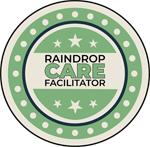
I JUST WANT A RAINDROP!
Have a facilitator contact you!
The Center for Aromatherapy Research and Education, Inc. (CARE) and it's Certified Instructors have trained hundreds of Facilitators in the Raindrop Technique. Click here to get started.
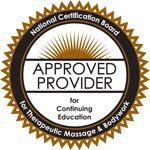
Center for Aromatherapy Research and Education is approved by the National Certification Board for Therapeutic Massage and Bodywork (NCBTMB) as a continuing education Approved Provider.
CARE International Inc
12923 BCR 800
Marble Hill, MO 63764
Toll Free (800) 758-8629
Fax (573) 755-0365
Open 9:00 AM to 4:30 PM CST
Monday - Friday
